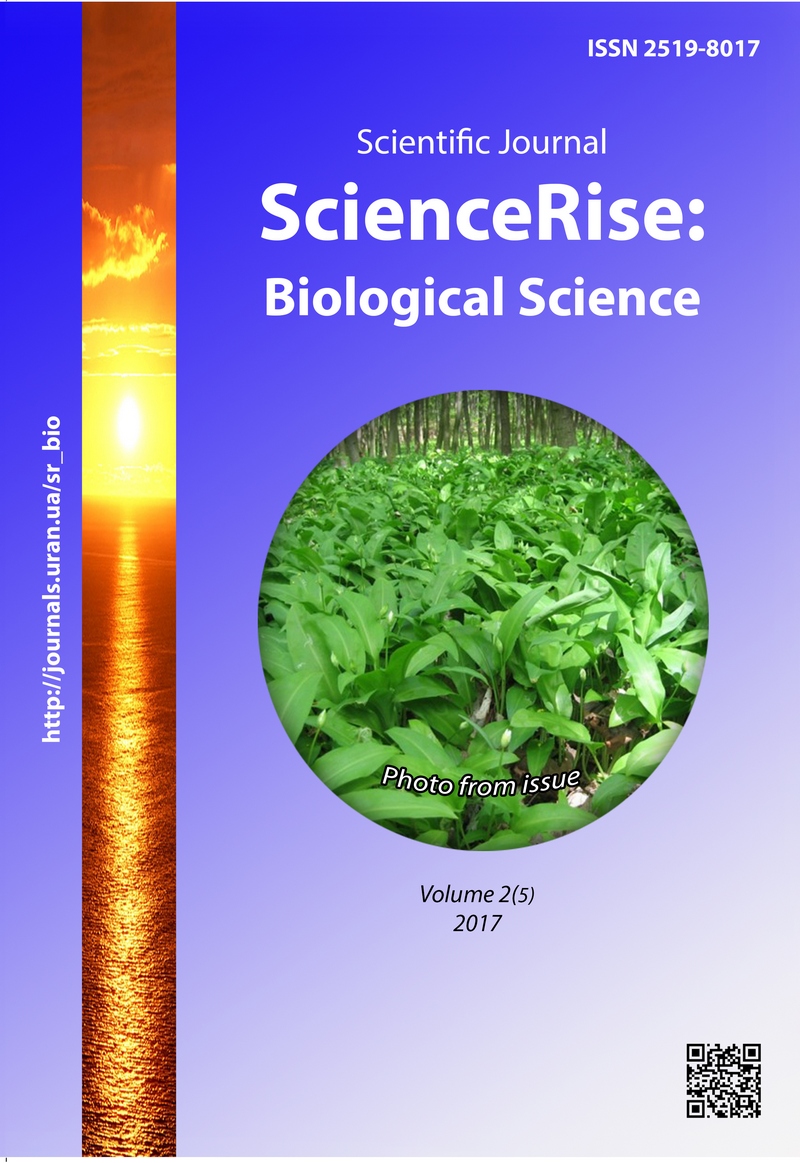Аналіз морфологічної мінливості тюльки (clupeonella cultriventris, nordmann, 1840) Дніпровсько-Бузької гирлової системи
DOI:
https://doi.org/10.15587/2519-8025.2017.98792Ключові слова:
Дніпровсько-Бузька гирлова система, тюлька, меристичні, пластичні ознаки, морфологічна мінливістьАнотація
У статті представлена інформація щодо морфологічної будови сучасного стада тюльки Дніпровсько-Бузької гирлової системи в умовах перебігу трансформаційних процесів, викликаних зарегулюванням стоку Дніпра. Найбільша варіабельність відмічена за показниками найменшої висоти тіла, вентроанальної відстані, лінійними розмірами анального плавця та параметрами відділу голови. Виявлені достовірні розбіжності у морфологічній будові тюльки при порівняні з даними минулого століття. Доведена наявність суттєвого статевого диморфізму у стаді
Посилання
- Sherman, І. M., Gejna, K. M., Kutіshchev, S. V., Kutіshchev, P. S. (2013). Ekologіchnі transformacіi rіchkovih gіdroekosistem ta aktual'nі problemi ribnogo gospodarstva. Ribogospodars'ka nauka Ukrainy, 4, 5–16.
- Grinzhevskiy, M. V. (1998). Akvakultura Ukrayini (organizatsiyno-ekonomichni aspekti). Lviv: Vilna Ukrayina, 364.
- Kozlov, V. I. (1993). Ekologicheskoe prognozirovanie ihtiofauny presnyh vod. Moscow: VNIRO, 250.
- Siginevich, G. P. (1968). Otsenka zapasov tyulki i stepeni ispolzovaniya eyu zooplanktona Kahovskogo vodohranilishcha. Gidrobiologicheskiy zhurnal, 4 (5), 46–54.
- Spiropulo, Z. I. (1981). Pitanie i pishchevye vzaimootnosheniya molodi promyshlennyh ryb v nizovyah Dnepra. Rybnoe hozyaystvo, 32, 58–62.
- Luts, G. I., Mihman, A. S., Rogov, S. F., Filchagin, N. K. (1981). Pitanie azovskih pelagicheskih ryb tyulki i hamsy. Gidrobiologicheskiy zhurnal, 17 (4), 26–31.
- Kogan, A. V., Zaytseva, E. M. (1974). Pitanie tyulki Clupeonella delicatula caspia morpha tscharchalensis (Borodin) Kuybyshevskogo vodohranilishcha. Voprosy ihtiologii, 14 (3 (86)), 477–482.
- Ozinkovskaya, S. P. (1969). Razmnozhenie tyulki v Kahovskom vodohranilishche. Kishinev, 28.
- Siginevich, G. P. (1969). Tyulka (Clupeonella delicatula delicatula NORDMANN) kak planktofag Kahovskogo vodohranilishcha. Leningrad, 21.
- Shevchenko, P. G. (1991). Ekologo-morfologicheskaya harakteristika tyulki Clupeonella cultriventris cultriventris (Nordman) i ee rol v ekosisteme dneprovskih vodohranilishch. Kyiv, 18.
- Geyna, K. M. (2007). Harchovi vzaemovidnosini tyul'ki ta tovstolobikiv Kahovskogo vodoshovishcha. Institut ribnogo gospodarstva UAAN. Kyiv, 24.
- Geyna, K. M., Gorbonos, V. M. (2006). Rozmirno-vagova ta vikova struktura populyatsiyi tyul'ki Dniprovsko-Buzkoyi girlovoyi sistemi u zv’yazku z osoblivostyami vedennya yiyi promislu. Prirodnichiy almanah, 8, 18–26.
- Vladimirov, V. I. (1950). Tyulka basseyna r. Dnestr. Trudy instituta gidrobiologii, 25, 63.
- Pravdin, I. F. (1966). Rukovodstvo po izucheniyu ryb. Moscow: Pishchevaya promyshlennost, 374.
- Aksyutina, Z. M. (1968). Elementy matematicheskoy otsenki rezultatov nablyudeniy v biologicheskih i rybohozyaystvennyh issledovaniyah. Moscow: Pishchevaya promyshlennost, 289.
- Pavlov, P. Y. (1980). Fauna Ukrayini. Ribi. Lichinkohordovi (astsidiyi, apendikulyariyi), bezcherepni (golovohordovi) hrebetni (krugloroti, hryashchovi ribi, kistkovi ribi – osetrovi, oseledtsevi, anchousovi, lososevi, hariusovi, shchukovi, umbrovi). Vol. 8. Kyiv: Naukova dumka, 352.
##submission.downloads##
Опубліковано
Як цитувати
Номер
Розділ
Ліцензія
Авторське право (c) 2017 Konstantin Gеіna, Svetlana Shashlykova

Ця робота ліцензується відповідно до Creative Commons Attribution 4.0 International License.
Наше видання використовує положення про авторські права Creative Commons CC BY для журналів відкритого доступу.
Автори, які публікуються у цьому журналі, погоджуються з наступними умовами:
1. Автори залишають за собою право на авторство своєї роботи та передають журналу право першої публікації цієї роботи на умовах ліцензії Creative Commons CC BY, котра дозволяє іншим особам вільно розповсюджувати опубліковану роботу з обов'язковим посиланням на авторів оригінальної роботи та першу публікацію роботи у цьому журналі.
2. Автори мають право укладати самостійні додаткові угоди щодо неексклюзивного розповсюдження роботи у тому вигляді, в якому вона була опублікована цим журналом (наприклад, розміщувати роботу в електронному сховищі установи або публікувати у складі монографії), за умови збереження посилання на першу публікацію роботи у цьому журналі.










